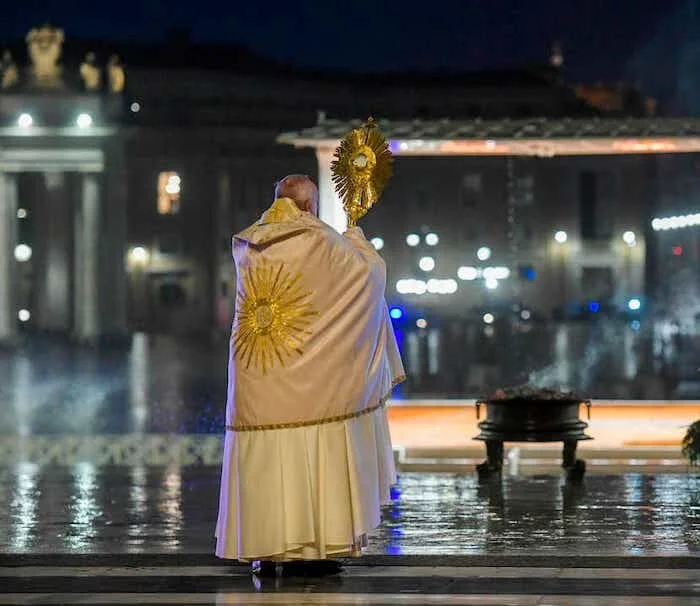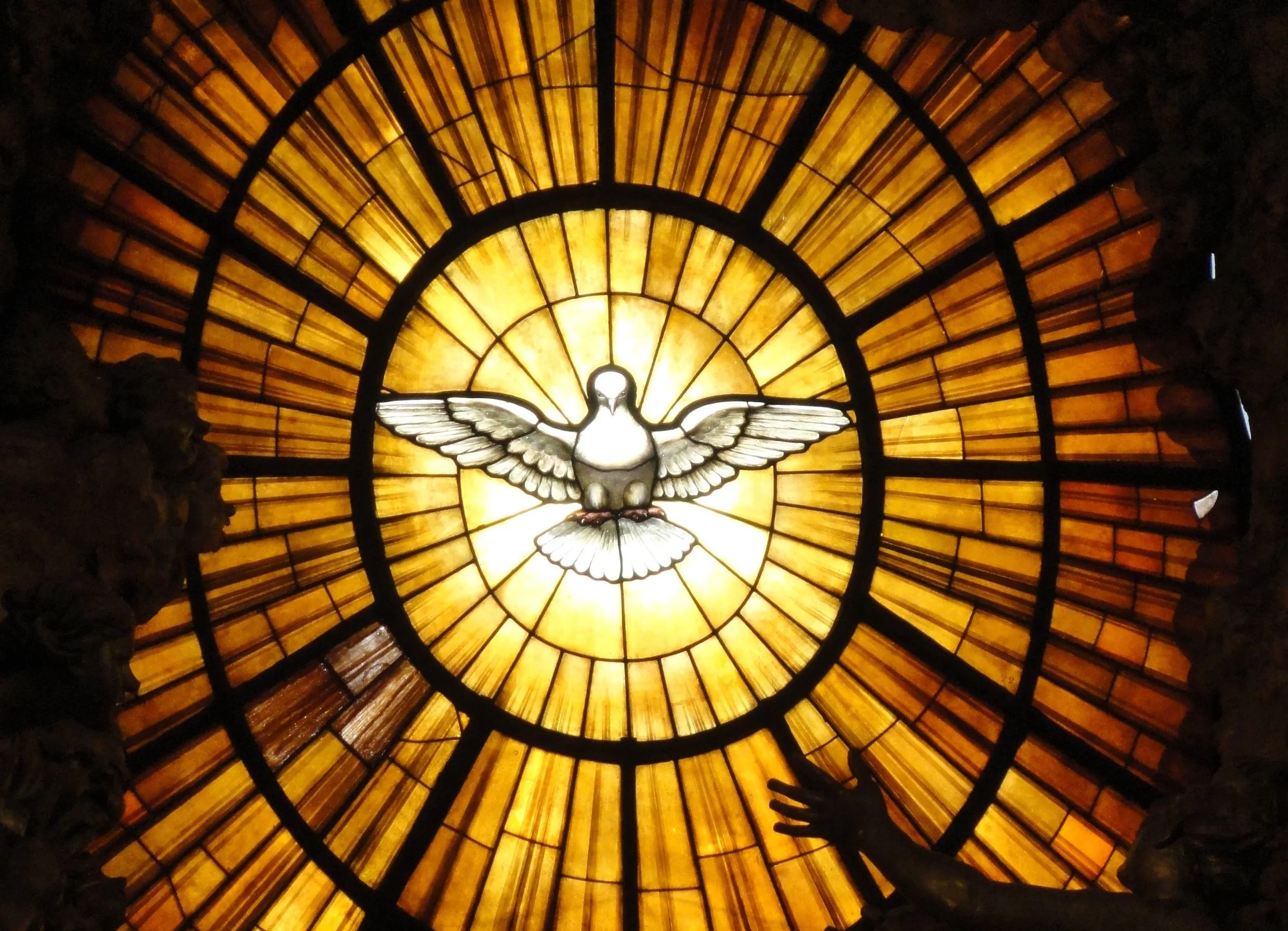A reflection on Mary Szybist’s ‘Annunciation under erasure’
This year, we celebrate the feast of the Annunciation under strange circumstances of social—or at least physical—isolation. Something is missing, to be sure. Fr Jarred Mercer meditates on Mary Szybist’s poem Annunciation under erasure, also about things missing. This piece also appears on the website of Merton College, Oxford.
In the sixth month the angel Gabriel was sent by God to a town in Galilee called Nazareth, to a virgin engaged to a man whose name was Joseph, of the house of David. The virgin’s name was Mary. And he came to her and said, ‘Greetings, favoured one! The Lord is with you.’ But she was much perplexed by his words and pondered what sort of greeting this might be. The angel said to her, ‘Do not be afraid, Mary, for you have found favour with God. And now, you will conceive in your womb and bear a son, and you will name him Jesus. He will be great, and will be called the Son of the Most High, and the Lord God will give to him the throne of his ancestor David. He will reign over the house of Jacob for ever, and of his kingdom there will be no end.’ Mary said to the angel, ‘How can this be, since I am a virgin?’ The angel said to her, ‘The Holy Spirit will come upon you, and the power of the Most High will overshadow you; therefore the child to be born will be holy; he will be called Son of God. And now, your relative Elizabeth in her old age has also conceived a son; and this is the sixth month for her who was said to be barren. For nothing will be impossible with God.’ Then Mary said, ‘Here am I, the servant of the Lord; let it be with me according to your word.’ Then the angel departed from her.
Luke 1.26-38
Annunciation under Erasure, Mary Szybist
The Annunciation must be one of the most commonly depicted scenes in the history of art. From paintings, to music, to poetry and narrative, the story of Gabriel’s message to Mary—infused with doubt and belief, joy and sorrow, fear and comfort—has proved to be remarkably generative for both the life of faith and the creative impulse. It is a story sharing space with both devastation and hope, and this means it is a story for all of us, whoever we are and wherever we are in life.
Mary Szybist’s remarkable collection of poetry, Incarnadine, was inspired by a personal tour of paintings of the Annunciation in Italy. She rewrites the narrative in poetic form over and over again through the different representations of it she finds in the paintings, confronting issues of modern life along the way and bringing in evocative tones of the sacred and profane, erotic, carnal, spiritual, and more. This simple erasure poem, a poem created literally from erasing parts of Luke’s narrative, helped me to approach the Annunciation in an entirely new way.
We cannot imagine Mary—comforted here by the angel and comforted still along the way by Joseph not abandoning her, by her shared experience with her relative Elizabeth—as continuously recalling the event of the Annunciation in comfort, ease, and delight. And nowhere do we hear of her being entirely settled, unworried, and confident after her meeting with Gabriel. We cannot imagine that she didn’t have to wrestle through those words of the angel: ‘Do not be afraid, Mary’, each and every day. Maybe even chanting them like a mantra, like a blessing, like a song you can’t get out of your head. Surely, she must have performed her own ‘erasure’ time and time again: ‘be afraid Mary’, ‘be nothing’, ‘be impossible’, ‘and the angel departed’.
Annunciation (1535), Titian. At the Scuola Grande di San Rocco.
Mary’s response is a resounding ‘yes’, her refrain the glorious Magnificat, but how many times must the fragmented memory of that angelic meeting replayed in her head with anxiety or fear or worry or doubt alongside the rejoicing? And how many times after stomach pains, or a fall, or not feeling the baby move for a while must the distressed thought, ‘something isn’t right’, consumed her mind regardless of miracle and promise? And how perfectly appropriate and real and human this is.
We all perform erasure in our lives. And that’s OK. It’s OK to enter into times of fear and doubt or uncertainty, but we also have to remain aware of our selective consciousness—that we are forgetting parts of ourselves; that we are practising erasure. The story of the Annunciation is a story of both uncertainty and belief, sorrow and joy, and everything in between, but it is also a story about radical newness, about openness, about beginnings. Just as Mary must have had her own erasures and fragmentations of memory, so would she have been able to recall and hear, ‘The Lord is with you’; so would she have been able to live her calling again and again: ‘Here I am … let it be according to your word’.
The Annunciation seems almost forgotten today aside from its prevalence in the arts. But it’s newness, that radical new beginning it brought about, was once felt more readily. Lady Day, exactly nine months before we celebrate the birth of Jesus, was once the beginning of the new year. Filled with promise and yet also that abruption, that shock, that fright, the risk of new beginnings always brings. The Annunciation is a story ripe for both the rejoicings and the questions and uncertainties that life carries, and it’s about opening up and receiving all of it.
This is Mary’s story in an irreducible particularity and at the same time the story of each of us, of any of us, met with the perfect love of God in the midst of our fear, our struggle, our poverty and weakness, our insecurity and doubt and hearing the words: ‘The Lord is with you, do not be afraid’. And it is an opportunity for each of us to respond, to enter into that risk, that freedom, that openness; to say ‘yes’ to such a love. And this opportunity is gifted to us because the story is as much or more about God’s opening up to us as Mary’s opening up to God’s plan and salvation. Mary opens up and receives God-among-us, Emmanuel, but God in Christ is also opening up and welcoming human life and experience. At the root of the Annunciation is the new, radical, earthy manifestation of ‘The Lord is with you’. The God of the universe opens up entirely to us, entirely to the weakness and beauty of humanity—God in the womb, in the manger, who walks among our streets, holds little children, touches lepers, who dies in human flesh. There is no greater welcome, no wider openness, no fuller embrace, and no invitation more joyful than this.
Mary’s ‘yes’ is the vessel through which God-among-us steps into our world and opens up to us as one of us. Our ‘yes’ today is not a claim to perfection or a statement of moral superiority any more than the days we can only bring ourselves to say, ‘no, I just can’t’ mark us out as deficient or failures. The openness of God’s love is unending, so that wherever we find ourselves we are welcomed and embraced. So whatever these strained circumstances and whatever insecurity they may cause, ‘the Lord is with you, do not be afraid’.
We beseech you, O Lord, pour your grace into our hearts, that as we have known the incarnation of your Son Jesus Christ by the message of an angel, so by his cross and passion, we may be brought to the glory of his resurrection; through Jesus Christ your Son our Lord, who is alive and reigns with you, in the unity of the Holy Spirit, on God, now and for ever.
Collect for the Feast of the Annunciation of our Lord to the Blessed Virgin Mary







